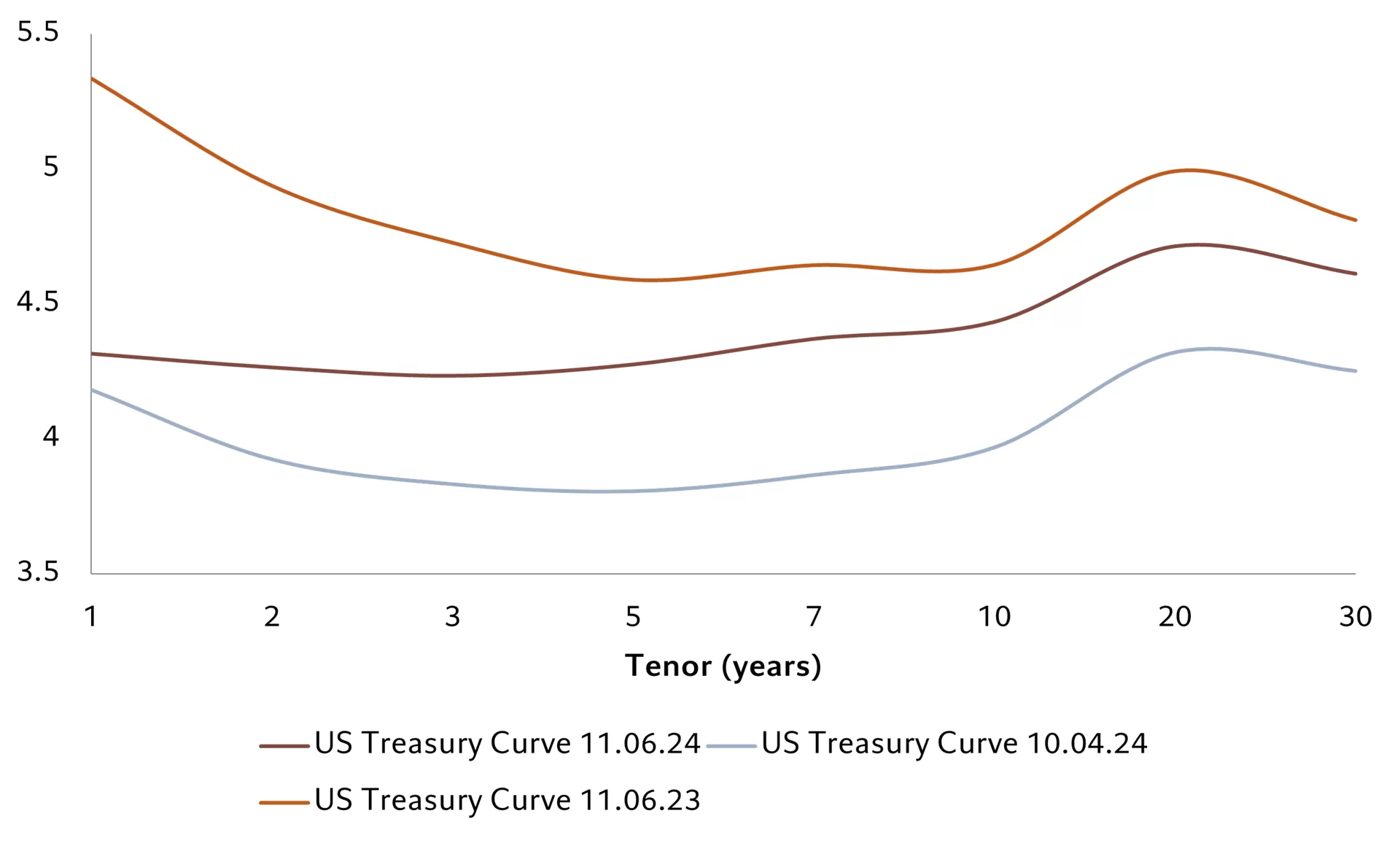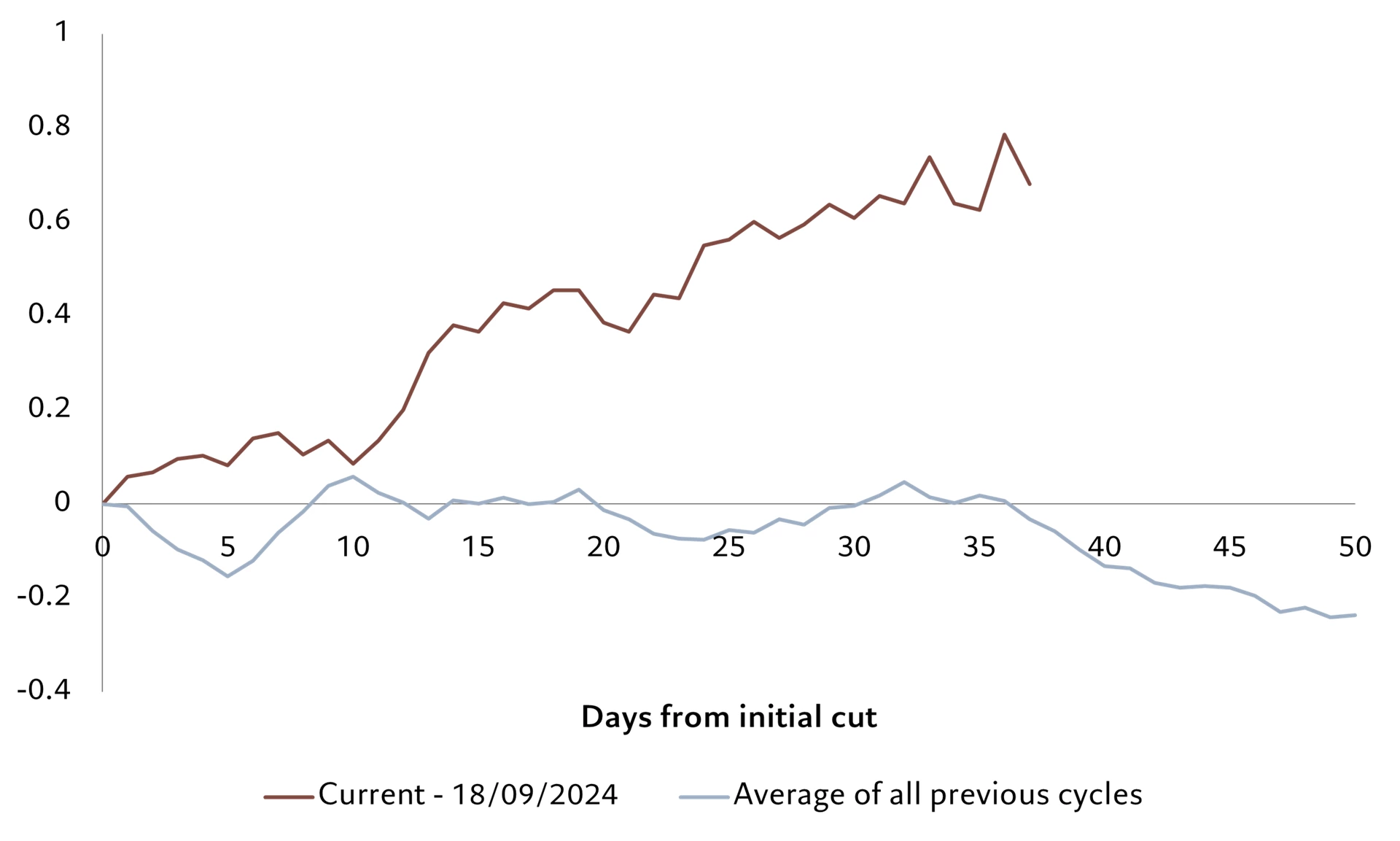Donald Trump’s election victory is likely to be significant for fixed income investors worldwide. But quite how significant depends on which version of Trump we get.
Mary-Therese Barton, Chief Investment Officer Fixed Income & Mickael Benhaim, Head of Fixed Income Investment Strategy & Solutions Pictet Asset Management.
The fixed income and currency markets had already priced in a high probability of Donald Trump’s victory ahead of the US presidential election. The question investors now face is which Trump are they likely to get – because there are three possibilities, each of which has different implications for the markets.
First, there’s the textbook Trump, in other words the Trump that the market was anticipating. Here, investors take Trump’s proposed policies at face value on the basis that he’s likely to follow through. This version, which includes aggressive tariffs, corporate tax cuts, deregulation, has largely been priced into the market.
Then there’s the volatile, erratic Trump, who might stick to his promises, but might equally likely veer off in an entirely different direction. This unpredictability should translate into higher implied volatility – which is being priced into some assets, but not all.
Finally there’s the curveball Trump, the Trump who’s looking to cut deals, using his initial, extreme stances merely as starting points for negotiating settlements that are favourable to the US but far short of the headlines. We think this last Trump is the version that markets have not discounted. As such, it represents potential value for investors.
Fig. 1 – Curveball
Shape of US Treasury bond yield curve at relevant date, %
Bloomberg, Pictet Asset Management. Data as at 08.11.2024.
It’s the economy
Complicating matters for fixed income investors is how the US Federal Reserve’s reaction function might change in light of the election results – not just Trump’s victory but the very strong likelihood that it results in a Republican sweep in Congress. Republicans have taken the Senate and are leading in the House of Representatives. Republican control of both the executive and legislature opens the door to Trumpian policies of lower taxes and higher deficits, both of which have implications for the yield curve.
An unexpectedly strong economy has already forced investors to revise their expectations about the current rate cycle. The Fed is still forecast to cut rates further, but now by less than was previously anticipated. Trump tariff and immigration policies are likely to be inflationary. As are higher fiscal spending and lower taxes. Both could push up Fed funds’ terminal rate – where the official interest rate is ultimately likely to settle – as well as the route to it.
For fixed income investors, the higher inflation component of the yield curve is likely to be compounded by higher term premia – basically a risk premium for holding long dated bonds. That’s because of risks associated with the US’s burgeoning deficit.
These effects are already being played out in the yield curve, which has already started to shift higher from lows earlier this year, to where the long end is approaching last year’s levels (see Fig. 1). Indeed, it’s been an unusual start to the Fed’s cutting cycle, with 10-year Treasury bond yields rising rather than easing back in the days following the first cut (see Fig. 2).
Fig. 2 – Bucking the trend
10-year US Treasury bond yield change, days from initial Federal Reserve rate cut,
Bloomberg, Pictet Asset Management. Data as at 08.11.2024.
Wither the dollar?
Tariffs tend to boost the currency of the country imposing them. Whether Trump actually levies the 60 per cent tariff on China that he said he would is open to debate. But the market thinks there will certainly be significant anti-trade measures. With the dollar already being given a lift from the state of the economy – and therefore revised thinking about how low rates might fall in the current cycle – it was further boosted by Trump.
But if, as we think, Trump ends up pulling his punches on trade, the dollar could end up giving back some of its gains.
A strong dollar tends to bad for emerging market debt. Countries that borrow in dollars have more to pay back in terms of their own currencies and output. But China could end up mitigating this. The Chinese government has already provided RMB2 trillion of monetary stimulus (equivalent to 1.6 per cent of GDP), authorised struggling local governments to issue RMB10 trillion in debt over five years to restructure their finances and indicated that it would consider yet further fiscal measures. If Beijing feels it needs to do more in response to Trump’s bid to curtail Chinese imports, it has the fiscal headroom to do so. And any supersized China stimulus will inevitably give a boost to other emerging market economies, particularly those of its near neighbours.
Meanwhile, the European Central Bank is likely to respond both to the threat of American tariffs and a weak euro zone economy with further monetary easing. We think there’s a good likelihood the ECB will find itself having to reduce rates to below its natural rate in light of these pressures.
Geopolitical conundrums
Underlying Trump’s near- and medium-term effects on the economy is what he implies for geopolitics. Will he force a settlement on Ukraine, thus ending its war with Russia? And then would Russia turn its eye to the Baltic states? Will China use his instinctive isolationism as an opportunity to target Taiwan? What does it imply for the current state of the Middle East – will his victory embolden Israel to further target Iran? Will it make Iran, backed against the wall, lash out?
Geopolitical uncertainty is likely to add a further risk premium to asset prices more generally. Indeed, there’s a Trumpian risk premium that isn’t fully priced into markets – however his administration develops it will undoubtedly be full of surprises.
About Pictet
The Pictet Group is a partnership of seven owner-managers, with principles of succession and transmission of ownership that have remained unchanged since its foundation in 1805. The Group focuses exclusively on wealth management, asset management, alternative investments and related asset services. It does not engage in investment banking, nor does it extend commercial loans.
With CHF 694 (EUR 721/USD 772 /GBP 611) billion in assets under management or custody as at 30 June 2024, Pictet is today one of the leading Europe-based independent wealth and asset managers for private clients and institutional investors
Founded and headquartered in Geneva, Switzerland, Pictet today employs around 5,500 people. It has 30 offices worldwide, in Amsterdam, Barcelona, Basel, Brussels, Dubai, Frankfurt, Geneva, Hong Kong, Lausanne, London, Luxembourg, Madrid, Milan, Monaco, Montreal, Munich, Nassau, New York, Osaka, Paris, Rome, Shanghai, Singapore, Stuttgart, Taipei, Tel Aviv, Tokyo, Turin, Verona and Zurich.






